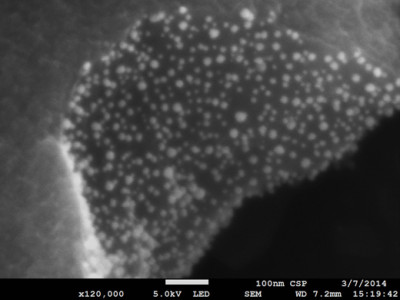Catalysts
For many petroleum and chemical processes, a heterogeneous catalyst material is used to speed or drive a desired chemical reaction. Both structural and chemical properties of a catalyst material can be critical parameters in its performance as a catalytic driver of a given chemical reaction. Because of the complex interaction of morphology and composition, several microanalysis technologies have become key in testing and monitoring changes or problems with catalyst materials. At Microtrace, our wide range of microscopy and microanalysis capabilities allow us to examine the dynamic character of these micro-structured and nano-structured materials. Light microscopy and scanning electron microscopy are primary tools in these structural investigations and are combined with chemical spectroscopies and elemental characterization by energy dispersive x-ray spectroscopy to reveal compositional variation. Furthermore, high resolution microanalysis by field-emission scanning electron microscopy or by transmission electron microscopy can provide sub-nanometer resolution.
Determination of the proper microanalysis techniques for each catalyst material project is accomplished by discussion of the problem with our Microtrace Scientists. Our microanalysis can be instrumental in your new catalyst development projects, as well as a critical tool in catalyst failure analysis projects, where determination of catalyst deactivation mechanisms is done. The premature deactivation of a heterogeneous catalyst can be caused by a wide variety of issues, and we have found that microanalysis or nano-characterization can help to elucidate the failure mechanisms.
Also see our work on nanoparticles.
How May We Help You?
Contact usto discuss your project in more detail.








